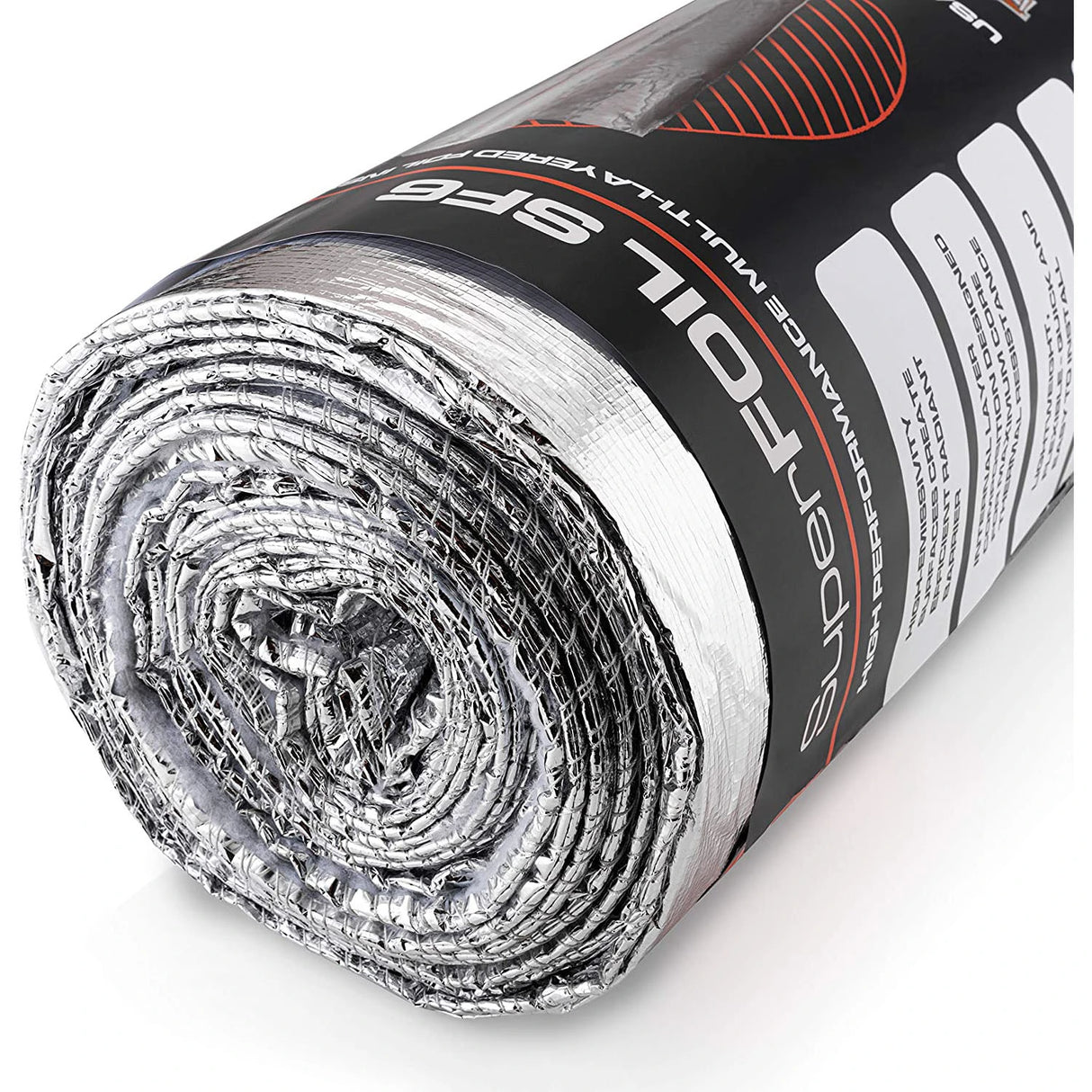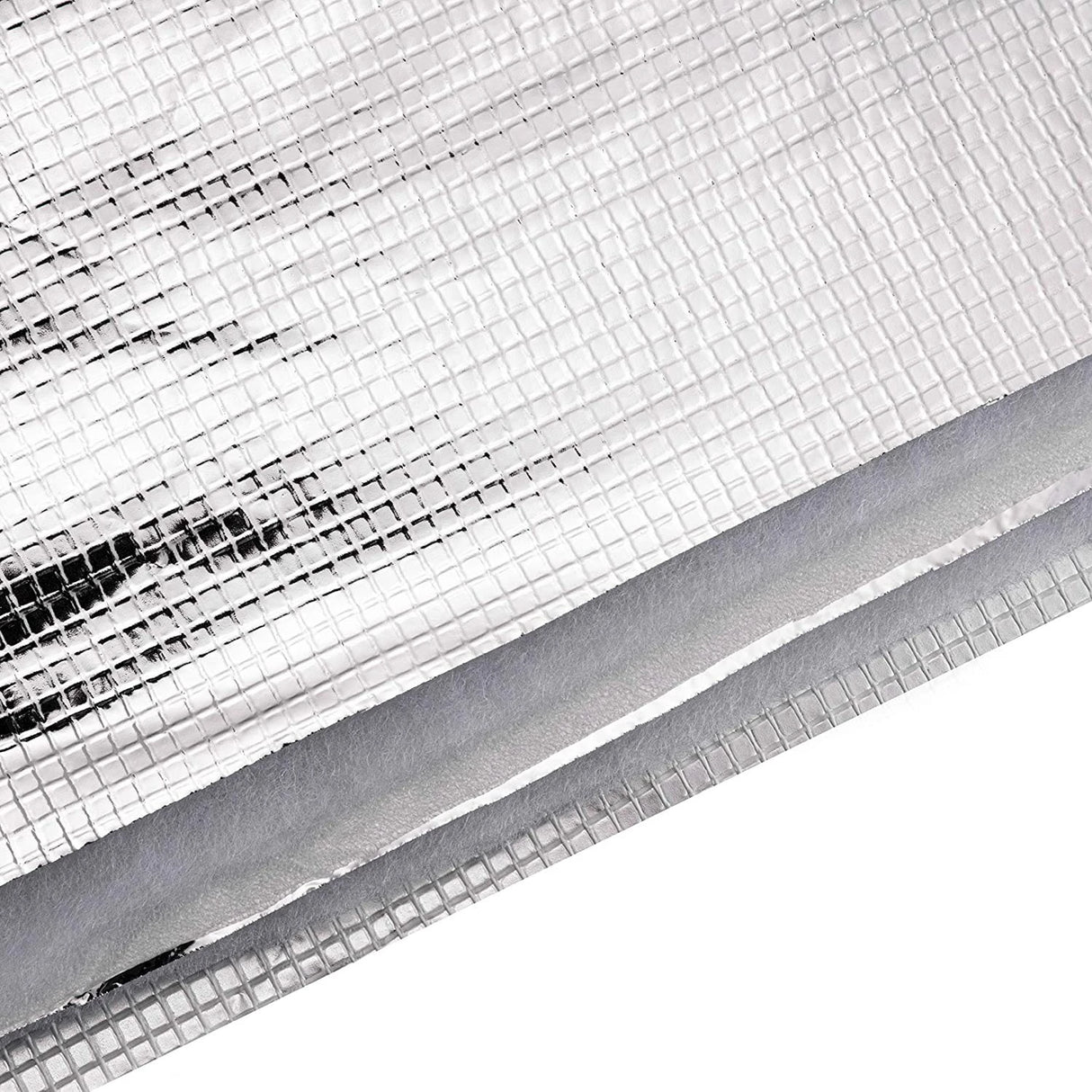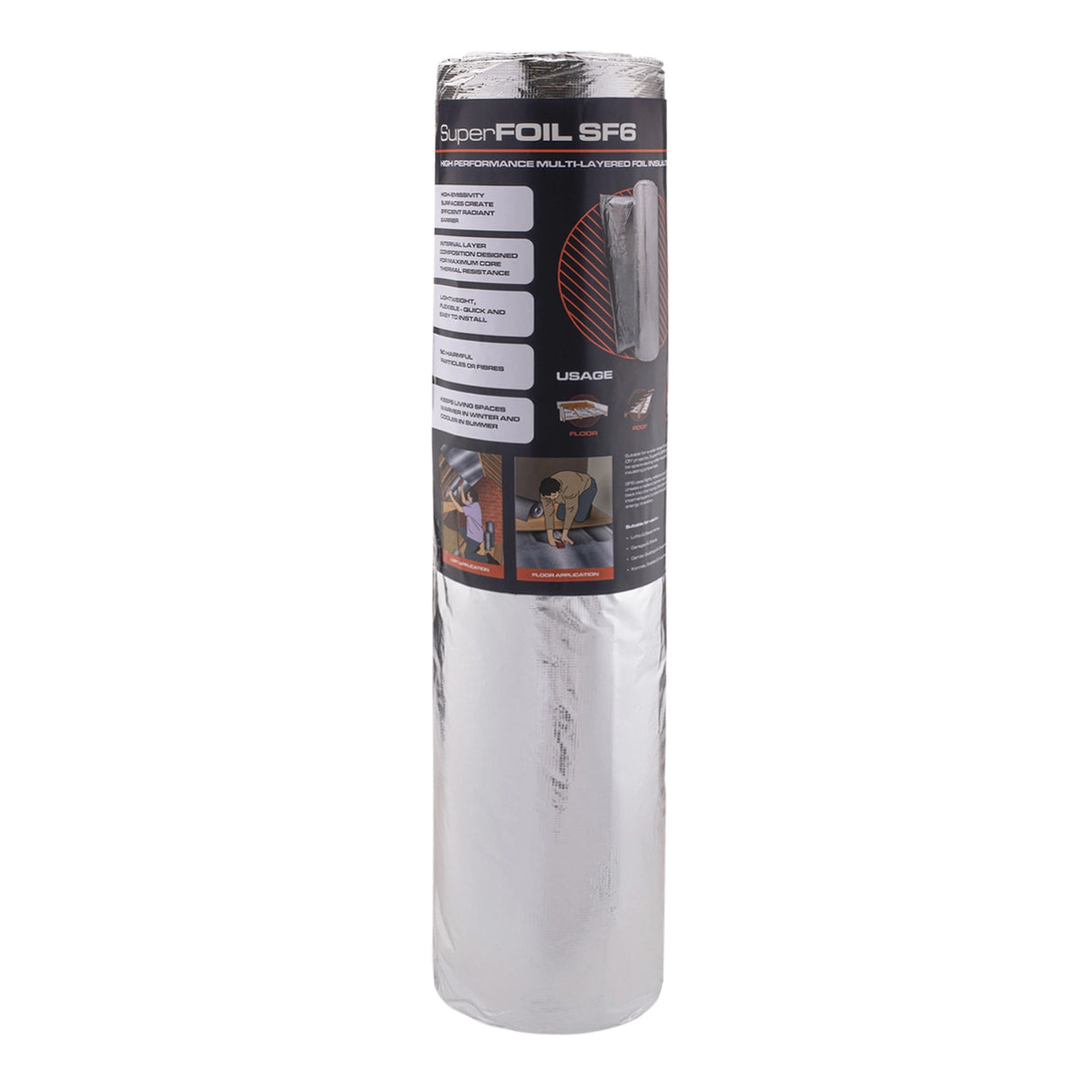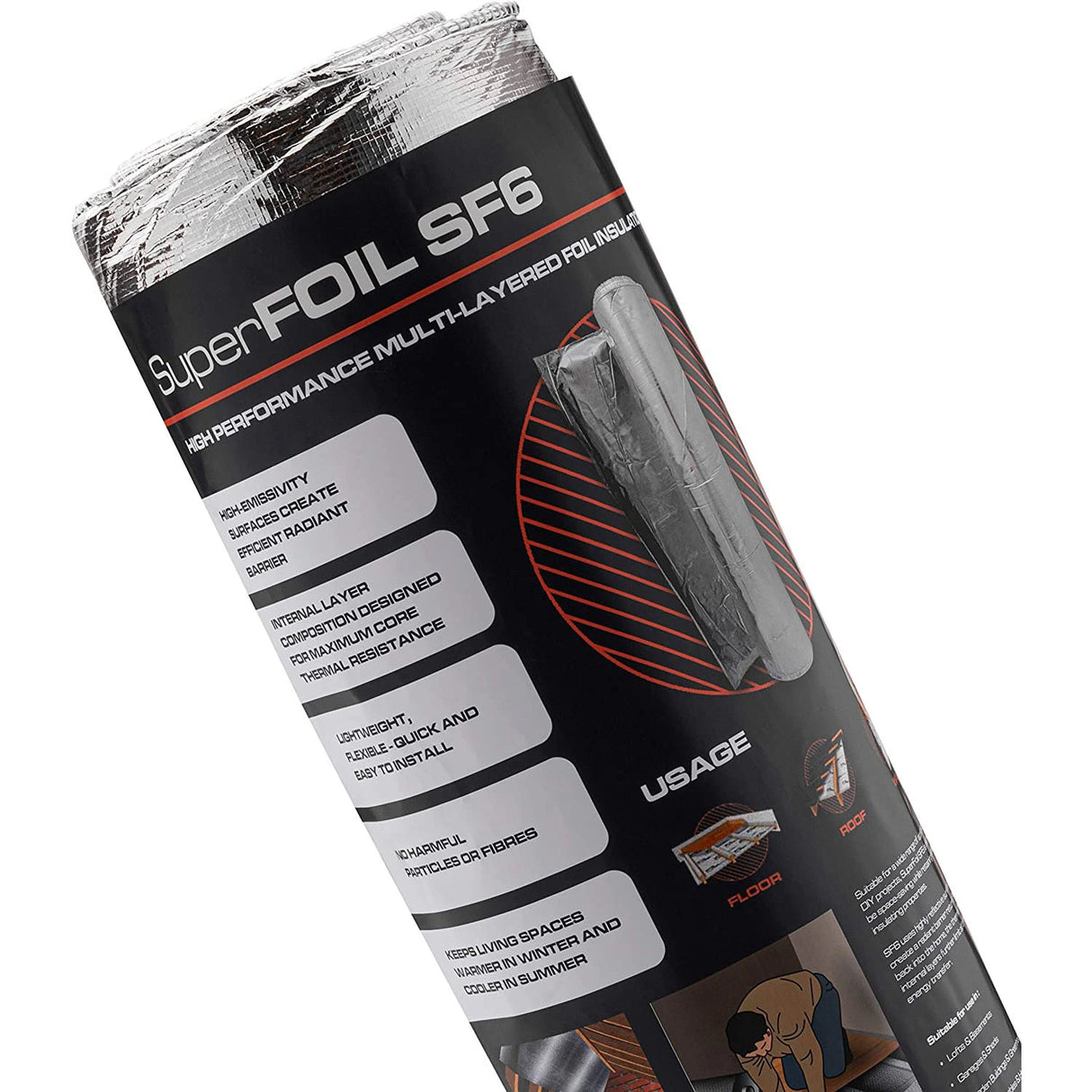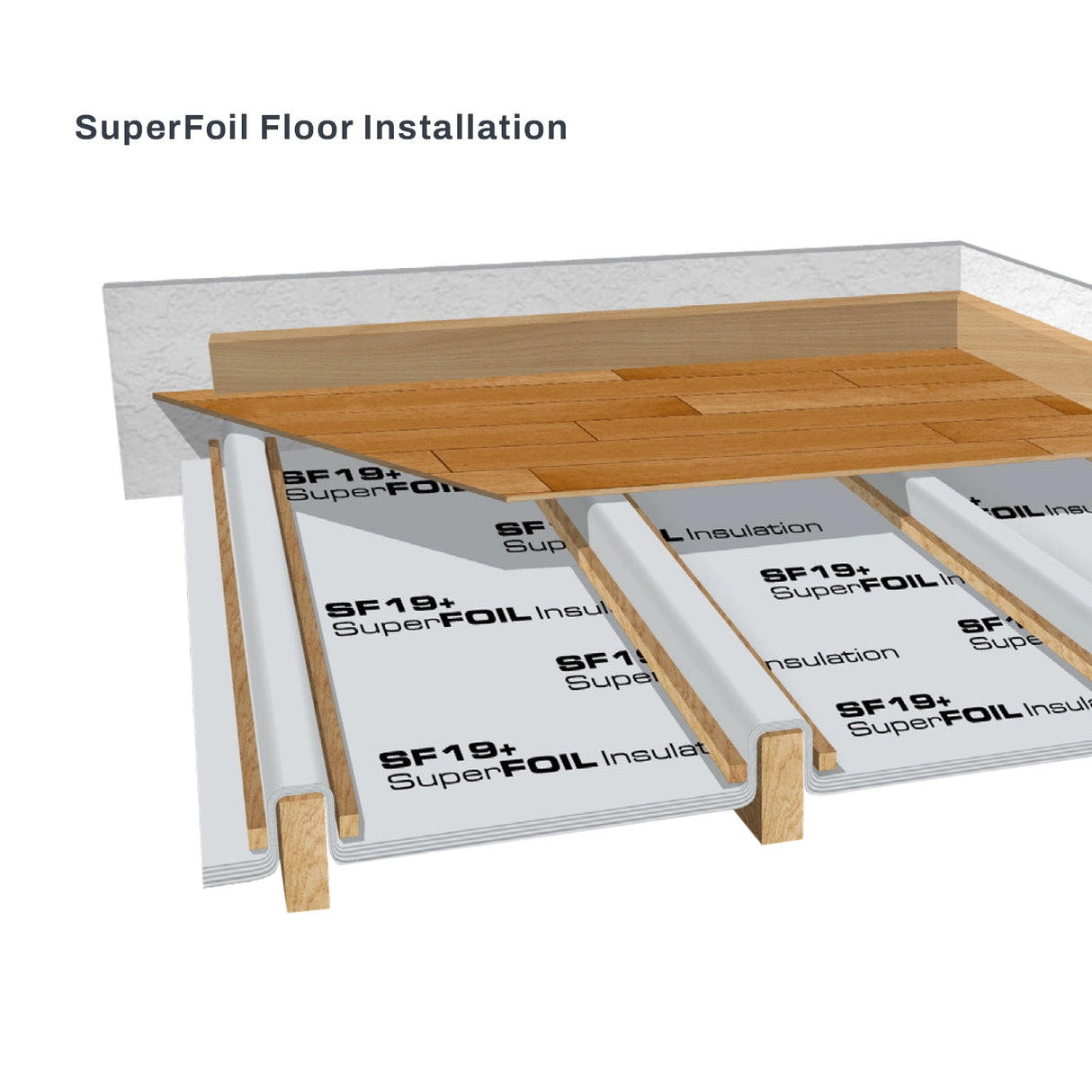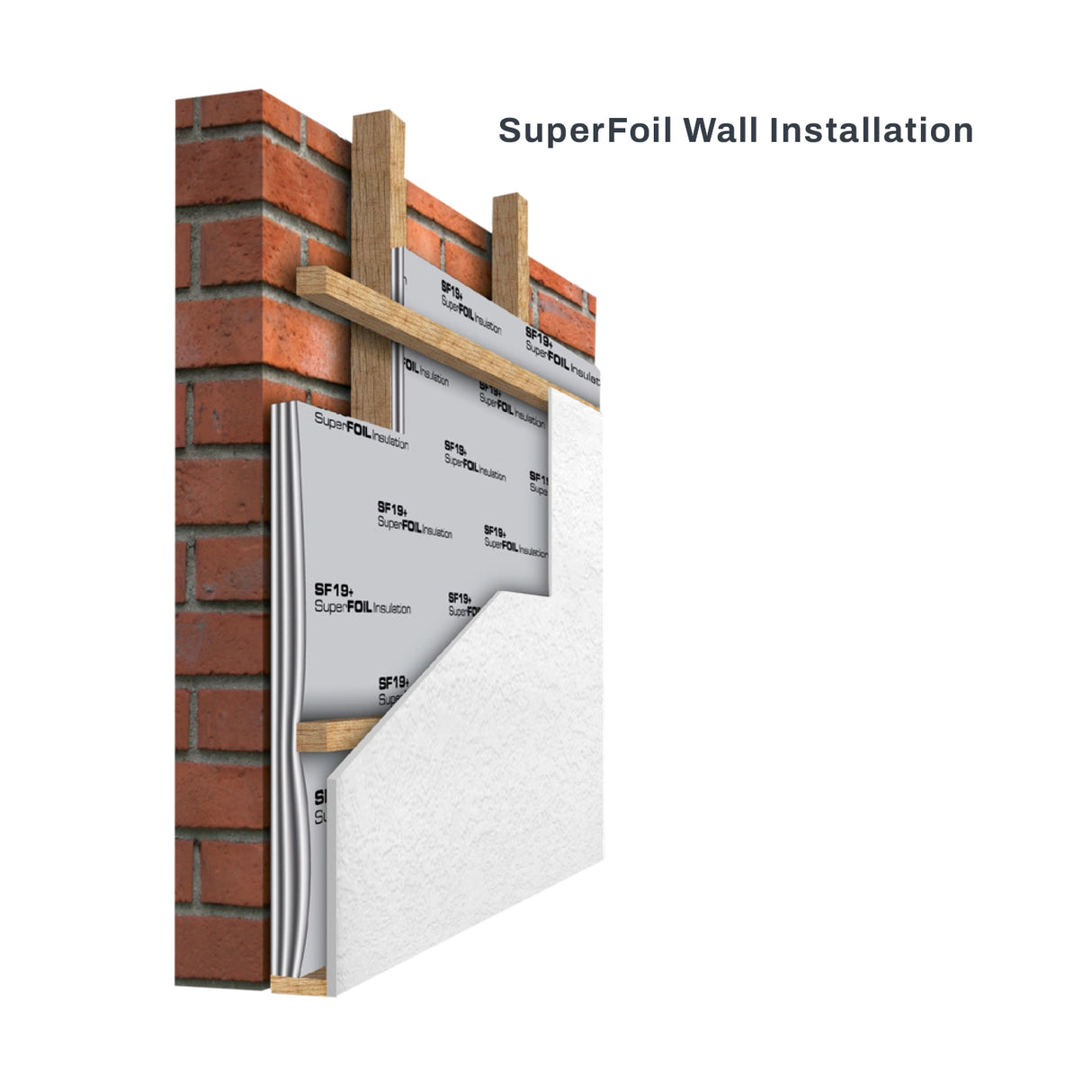SuperFOIL SF6 Multifoil Insulation - 1.2m x 10m - 12m²
SuperFOIL SF6 Multifoil Insulation - 1.2m x 10m - 12m² is backordered and will ship as soon as it is back in stock.
This lightweight and easy to install multi-foil insulation is perfect for DIY projects. With outer layers of mesh reinforced foil, and sandwiched layers of Aluminium Coated Reflective Foil PET, Thermo Foam Separation and Loft Quilt, this insulating multi-foil roll has an R value of 1.90 in roofs and 2.32 in walls.
Ideal for garden rooms, garages, vans and much more, Its 3-in-1 design functions as foil insulation, a vapour control barrier and a radiant barrier. Made from up to 40% recycled materials and is fully recyclable at the end of its 50+ year lifespan.
- Achieves an R Value of 1.90 in Roofs and 2.32 in floors
- No need for VCLs
- Ideal for New Builds, Extensions and retrofits
- Simple installation with basic tools and supplies
- Space-saving size with effective insulating properties
Data Sheets & Guides:
SuperFoil Under Rafter Installation Guide
SuperFoil Over Rafter Installation Guide
-
Size
-
Coverage (m²)
-
Thickness
-
Length10m
-
Width1200mm
-
Material
-
Estimated Lifespan
-
Thermal Resistance
-
Water Resistance
-
Reaction to Fire
Large Order or Specific Requirement?
CALL OUR TEAM
0115 6976 800

